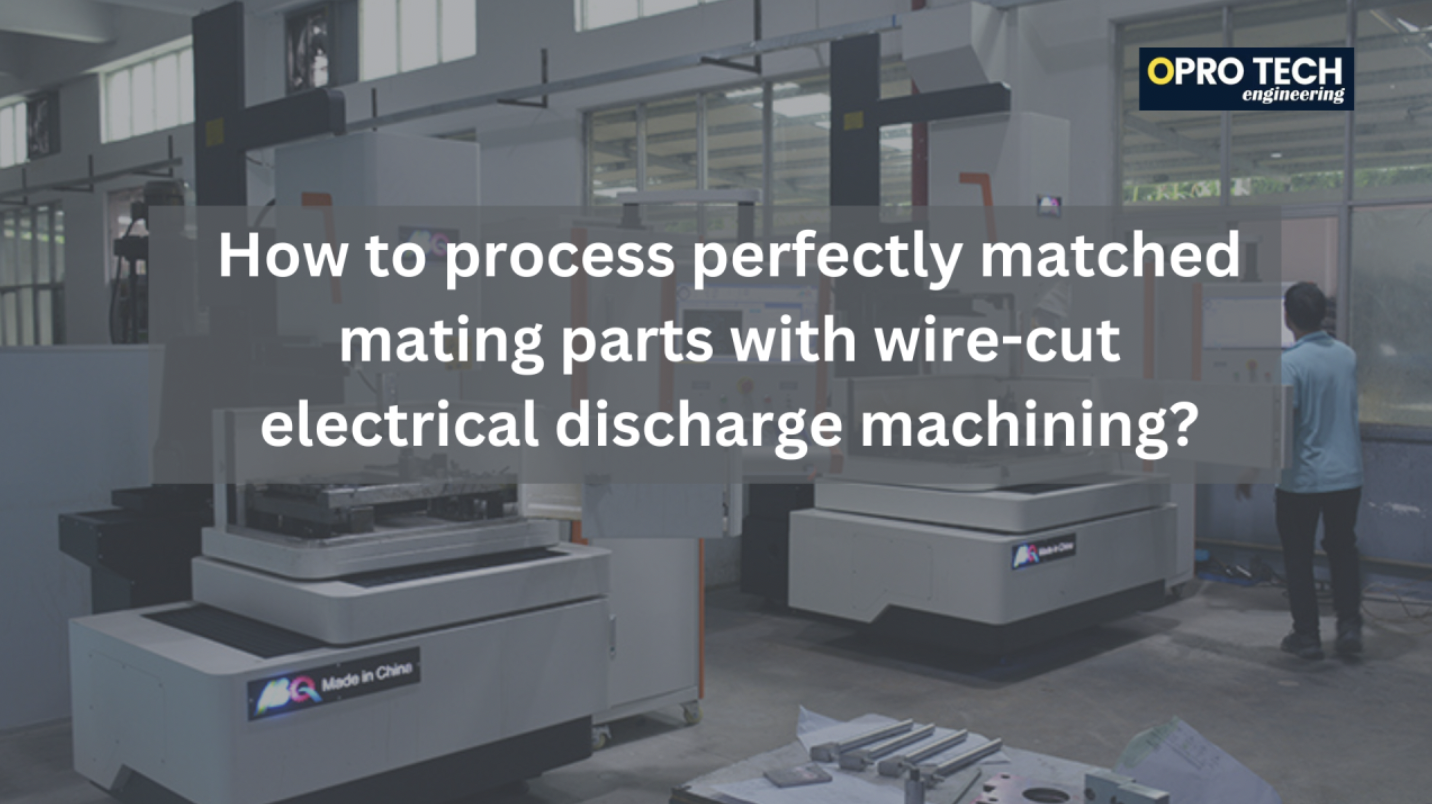How to process perfectly matched mating parts with wire-cut electrical discharge machining?

Many people have seen the GIF below two pieces of metal are put together, and with a gentle push, they seamlessly combine, astonishing everyone!
In fact, what the GIF demonstrates is parts processed by wire-cut electrical discharge machining, which is quite common in the mold industry.
Today, let's talk about the real technical topic:
How to process mating parts so perfectly with wire-cut electrical discharge machining.
In simple terms, the key to processing mating parts lies in selecting the appropriate offset, and suitable mating clearance, and sharp angles should be properly cleared.
Steps for processing mating parts:
- Standard parameter trial cutting
Trial cut a 10X10 convex mold with standard parameters and measured the dimensions.
For example, if the offset values used are 0.223, 0.164, 0.134, 0.129, and the measured dimension is 10.01, the single-side dimension is 0.005 larger.
2. Adjust the offset and process the convex mold
The offset values should be adjusted to 0.218, 0.159, 0.139, 0.124.
Then, the dimensions of the convex mold processed with this offset should be the standard size of 10.
3. Calculate the offset of the concave mold
The offset of the convex mold is 0.218, 0.159, 0.139, 0.124.
The offset of the concave mold should be reduced by the single-side mating clearance.
Generally, for a tight fit, the single-side clearance is 0.002, and for a sliding fit, it is 0.005.
The mating clearance can be directly subtracted from the offset, or input at the CLE.
4. Process the concave mold
If the mating clearance is 0.005, then the offset for cutting the concave mold should be 0.213, 0.154, 0.134, 0.119.
5. Mating
Fit the convex mold into the concave mold, ensuring that the workpiece is inserted vertically.
With a 0.005 mating clearance, the mating should be very smooth.

As an advanced processing technology, wire-cutting processing has found widespread application in precision mold manufacturing.
So, what are the characteristics of wire-cutting processing?
(1) Wide processing range:
As long as the workpiece to be processed is a conductor or semiconductor, regardless of its hardness, it can be processed.
(2) Due to the small electrode loss in numerical control wire cutting processing, high processing accuracy, and the fact that the electrode wire does not require sharpening, auxiliary time and tool costs can be saved.
(3) Apart from the minimum radius of the inner corner determined by the diameter of the electrode wire, any complex-shaped part can be processed as long as a processing program can be compiled.
(4) The electrode wire does not directly contact the workpiece during processing, and the force between them is small.
Therefore, there is no need for tools, workpieces, and fixtures to have sufficient rigidity to resist cutting deformation.
(5) Compared to general cutting processes, numerical control wire cutting processing has a low metal removal rate, and high processing costs, and is not suitable for the mass production of simple-shaped parts.

